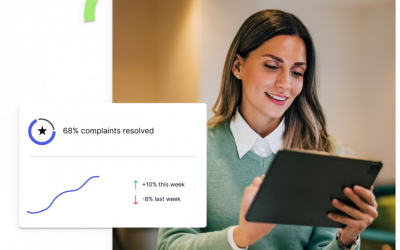Being able to find your needed data and then trust what you find is critical for business operations, growth and improvement. At its best, data can help you uncover patterns that may not be obvious at first glance and improve your business processes. But when you can’t find data you need, or it’s locked in data analytics tools that won’t talk to each other this can pose an operational challenge.
Think of data analysis as a math equation or balance scale. There are two sides that need to balance to best understand the true business impact. For example, if one of our clients has numbers on new sales training, we want to see the result of better sales figures. In a reactive example, if there are poor safety numbers that are getting worse, we want our client to implement training or new processes. The desired result is that safety reports improve over time.
With all that said, though, how do you find your data and get it ready for analysis?
Where is Our Data?
Most businesses use a variety of applications that collect, store, and manage data, including:
- Salesforce or other customer relationship management (CRM)
- Oracle or SAP enterprise resource planning (ERP)
- ADP payroll systems
- Ceridian Human capital management (HCM)
- Learning and talent management systems (LMS/TMS)
- Recruiting tech/platforms
We’ve seen clients with all or most of these data analytics tools, many of which don’t talk to each other. You can divide the data from these systems into two categories.
Process Data
There’s the data you collect and enter from your processes. This data is likely downloadable, and the separate systems may even have analytics themselves to help interpret the data. However, if you can use that data with other data sources, for example, sales data analyzed with market and competitor data, you’ll have deeper insights into your business practices, workflow, and teams.
Operational Data
Additionally, there’s the data about how your company uses a system. You may be able to connect with an API to see how much your employees use a solution, understand user adoption across your company, and assess training your employees have completed. Combine that information with employee performance data to uncover patterns that help enhance competence and productivity.
Don’t forget about extended enterprise data tracking tools and models. These external sources can include individuals, businesses, partners, dealers, distributors, and franchisees that your business depends on. While these aren’t core employees, the data about their productivity and contributions to your business represent significant data streams and revenue impact. These relationships are critical to business, so while it’s harder to track data against them, it can help provide thorough insight into your processes and workflows.
Keep in mind that combining and analyzing the data depends on data analytics tools that are compatible. Many times we work with companies where data is stored across multiple systems that have no way of linking. When you find yourself in this situation, finding a data management partner may be the best course of action.
Those “Other Data Sources”
There are free and paid sources of data external to an organization that can provide benefits for your organization. These might include healthcare data, government data sources, and tools that scrape social media to find data and dig for deeper insights. Additionally, industry analysts can provide a wealth of insights to supplement your data and insights. This will allow you to measure your results against national averages, industry standards, etc. both at a specific moment in time as well as over time.
Which Data Sources Do You Use?
Identifying the right tools and services relies on your company’s ultimate goal. Target your goals for reporting and use the data in accordance. Make sure you get your data, report on it, and then identify systems that normalize the data for reporting. Creating a pipeline of all necessary data sources allows you to streamline this process. Keep in mind that, often, multiple data sources can be consolidated and/or some even eliminated to help streamline reporting and access to right data.
How Do We Find Data for You?
We first identify the specific data needed to address the business need. We then look at the best ways to extract that data and normalize it so that data from multiple systems will “speak the same language.” Once all your data is on the same page, we then load it into a single system, aggregating it for review. This helps with building reports and dashboards and, most importantly, analysis and decision making.
Yes, You Were Right to Ask for Help
Many companies lack one or more aspects of the data management process, whether it’s identifying the right data to collect, extracting it from multiple systems, normalizing it, and sharing it with confidence. We have the services and solutions your team needs to find, transform, and grow from your data. Let’s talk.




